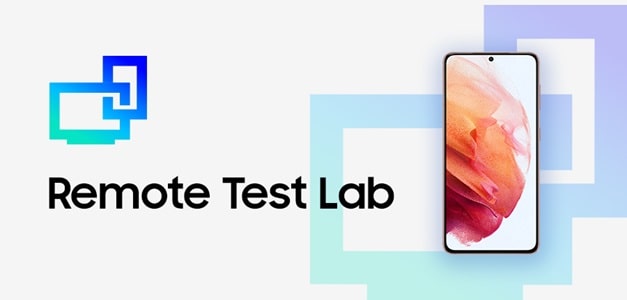With the rapid advancement of technology, remote test labs have emerged as a promising alternative to traditional in-person labs. This emergence is not just a fleeting mere trend but a reflection of the advantages it offers. As the digital sphere expands, so does the necessity of Remote Test Labs to test applications on real devices.
Performing app and browser testing with remote test labs helps to access a broad range of real devices on the cloud and assures efficiency in QA. It instantly provides realistic checks for top-notch software quality. This recent innovation eases and improves the way developers and testers work as they don’t have to spend money on the recent versions of devices to test their apps. All they need is an internet connection.
This article dives into remote test labs, their features and benefits, quality assurance, and primary steps in the quality assurance process. It also discusses the need for remote test labs for software and maximizing efficiency in QA with the help of Remote Test Labs.
Understanding Remote Test Labs
Remote Test Labs are solutions that combine software server applications, platforms, and components to connect the test bench to the test bench itself and the network. It allows developers to control watch devices and mobiles remotely. With the help of remote test labs testers can test applications on a real device
Remote Test lab service is a simple and effective way to meticulously test applications’ compatibility with the latest Samsung mobile devices. This reduces the spending on hardware devices. After getting a brief idea about Remote Test Labs let us know its features and advantages.
Features of Remote Test Labs
Remote test labs offer plenty of features. Some of them are mentioned below:
- Application installation- Testers can test Android and Tizen applications on the appropriate devices.
- Audio streaming- Testers can even listen to the audio played through the testing device.
- Screen capture and recording- Testers can capture or record the screen during testing.
- Remote Debug Bridge- Testers can access the remote devices through development tools like Android Studio as if the device is connected to the testers’ computer.
- Repeat testing- Testers can record and replay a sequence of actions multiple times.
- Cost efficient- In certain scenarios, Remote Test Labs can be significantly cost-effective compared to purchasing their test benches.
Benefits of Remote Test Labs
Remote Test Labs provides a more stable service through an overall systems build It also offers many new features. Some of them are mentioned below:
- Support for keyboard input– A virtual keyboard was used to enter text into the remote device. The Remote Test Labs now supports keyboard input. Whatever users type through the keyboard while the RTL client is activated will be sent to the remote devices through the RTL client.
- Enable to change screen quality mode– At low network speeds users may want to streamline their experience to ensure it remains responsive and tests perform as expected. Remote Test Labs have two quality modes for testing comfort. ‘Normal’ mode provides a more responsive experience. ‘High mode increases the accuracy of the test when connected to a faster internet.
- Support to change screen orientation mode– As long as the application supports portrait and landscape modes, it can be tested through the new Remote Test Labs.
- Application lifecycle management– Remote Test Labs lets users manage the entire application’s lifecycle from installing to exiting. The users don’t have to use the handset UI or look for individual icons on the remote device’s screen. This feature reduces the testing time.
- Support to reboot devices– Remote Test Lab lets users easily reboot remote devices. Normally the RTL Client Screen updates when the device is completely rebooted and ready for use.
Why use the Remote Test Lab?
Remote test labs are gaining importance in the continuously developing world. This is because of its flexibility, cost-effectiveness, and the ability to test on diverse platforms like iOS and Android. It accelerates bug-free app release and helps make itself a preferred choice for efficient and scalable testing. It is very helpful for efficiency in QA.
Remote Test Labs allow developers and testers to roll out robust applications with splendid user experience. It has a user-friendly web interface that provides remote access and control of test benches. Remote Test Labs connect existing test benches to the platform and allow team members to connect to them remotely from one location. Developers and testers can even rent test benches for a while.
What is quality assurance?
A quality assurance process consists of a chain of connected steps and activities to meet the goals settled by a QA strategy. This process is carried out by a team comprising a QA engineer, a test manager, and a test leader. To deliver an application that is not only free from errors but also excels in ensuring an excellent user experience and good quality is the main objective of the QA team.
Similarly, QA strategy is about setting and attaining business goals, such as expanding into a new market or lessening customer turnover.
What are the primary steps in the quality assurance process?
To understand the role of the Remote Test Labs for efficiency in QA the developers must have a clear idea of all the features of QA available in the Firefox browser. The primary steps involved in the quality assurance process are mentioned below:
- Analysing the requirements
QA analyses the application requirements, and functional and non-functional aspects in the previous stages of development. Early bug identification helps the tester to minimize the costs compared to fixing issues during testing or production.
- Tests planning
Information from requirements analysis informs test planning. It also includes testing strategy, project budget, scope, and deadlines. The test plan assigns responsibilities to individual testers to make the process easier.
- Designing the tests
QA teams create test cases and checklists based on application requirements, including conditions, data, and steps validated. Staging environments are then made to ensure accurate testing conditions.
- Executing tests and reporting defects
At this stage, various tests are conducted, including unit tests by developers and UI/API tests by QA professionals. For well-organized management, identified bugs should be recorded in a defect-tracking system.
- Running re-tests and regression tests
After bug resolutions, QA re-tests functions to ensure thorough validation and performs regression tests to certify that fixes haven’t impacted existing functionalities.
- Running release test
Once the developer informs about the release, the QA team pinpoints the affected functionalities, creates new test suites, and conducts smoke tests. Modified test suites are run and a report is generated if successful.
Maximizing efficiency in QA with the help of Remote Test Labs
Remote Test Labs empowers Quality Assurance teams to precisely assess the Software’s performance, reliability, and security of the software. Remote Test Labs increases the efficiency in QA by making certain that the software stands up to the user expectations and aligns with the broader goals.
This invaluable practice goes beyond traditional testing paradigms by leveraging the software’s scalability and flexibility, providing a more holistic, realistic understanding of how applications will perform under real-world conditions. By harnessing the power of Remote Test Labs, QA testing becomes faster and more manageable, escorting a new era of efficiency.
Utilizing remote tests lab on cloud platforms
By using the cloud, developers can use the RTL service to remotely control and test their app’s performance. They also can refine it so it can reach its best version. The RTL service provides the latest device, guaranteeing developers access to the newest hardware to test their apps. Testers can interact with a cloud platform remotely to perform manual and exploratory testing. There are many cloud platforms available remotely. LambdaTest is one of them.
LambdaTest is an AI-powered test execution platform for manual and automation testing of web and mobile applications. This platform allows testers to perform real-time and automation testing by providing access to more than 3000 environments, real mobile devices, and browsers online.
LambdaTest provides testers and developers with cloud-based Remote Test Labs that allow them to run and create tests on physical mobile devices. The device lab includes the legacy and latest iOS and Android devices. It also includes browsers like Safari, Chrome, Edge, and, more.
This platform also allows testers to perform the website’s cross-browser compatibility in real-time. Whether it is the oldest or the most recent version, like Chrome or Yandex LambdaTest helps the testers debug with its amazing feature of pre-installed native developer tools.
Conclusion
As the digital realm experiences a significant tilt towards Remote Test Labs, the spotlight on remote test labs becomes illuminating. Thus, showcasing its pivotal role in remotely testing devices and watches and allowing developers and testers to test applications on real devices.
Exploring the depths of Remote Test Labs is more than just a technical voyage. It’s a planned attempt to position QA teams as an important catalyst to harness the full range of benefits the Remote Test Labs offer.
Hope this article provides you the knowledge of Remote Test Labs and the benefits of using them for efficiency in QA.


